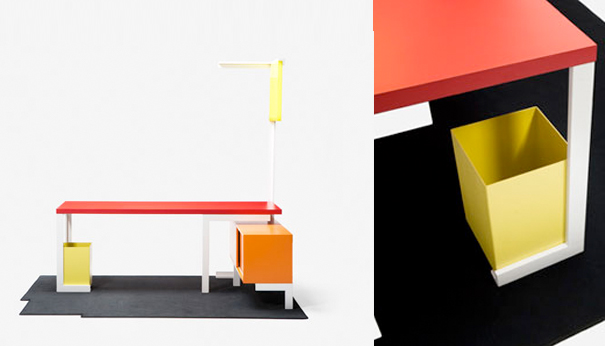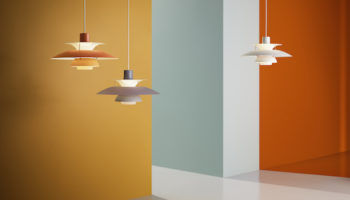No Walls Required: Matali Crasset’s Open Room
I’ve been thinking about the true litmus test for Matali Crasset’s “Open Room” for UK manufacturer Established and Sons. The modular grouping of linked pieces (and that’s “linked” in the actual sense as well as the metaphorical) includes a work station, cupboard, lamp, and small container, each joined to the next via “a metallic technical design cut by angles and lively coloured functional props where life adventures are organized.”
Open Room. Designed by Matali Crasset for Established and Sons.
French designer Crasset articulates the concept as a “room within a room,” a portable “script of life,” that defines use to the same degree as it defines space: “a space with no walls, no restrictions… just a supporting contour remains. It is both a symbolic and functional object made with defined corners delineating space.” The functions suggested by “Open Room” are both conventional and revolutionary. On the one hand, the arrangement is a simple—if streamlined and concise—grouping of the essentials for a work/living space; that is to say it provides space for work, storage, light, and refuse. In this regard, it’s much like recent 3rings modular configurations such as Casulos’s Life in a Box and the ODA ROOM. On the other hand, Open Room implies permanence in a way that other modular concepts do not (Crasset calls it “a furnished space free from traditional definitions, emphasizing simplicity and immutability”). This embrasure of contrasts—portability on the one hand and immutability on the other—lends Open Room a distinctive identity that sets it apart from the conventional modular notions of re-arrangement or re-configuration. And therein lies the “thing,” as the Bard once said, for Open Room’s evocation of a self-contained space emerges from its “immutability.” Move it from space to space—from city to city if you wish—but don’t upset its integration of parts to the whole, otherwise the illusion of a movable room might be irrevocably altered.

But back to the litmus test: if you placed Open Room in any environment—a field of poppies, say, or amid the fantastical, crashing waves of the North Atlantic (like the numinous beach house in Eternal Sunshine of the Spotless Mind), does it persist? Does it retain the symbolic and functional intention of its creator? Moving on from reveling in the imaginative flight of fancy, I think the answer is yes. Crasset’s wondrous, brightly-hued agglomeration has an identity that transcends barriers of time—and, yes, space as well
via Dezeen




Leave a Reply